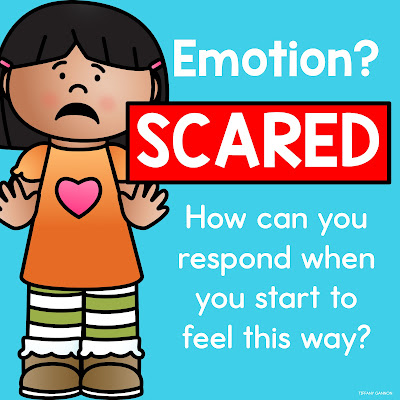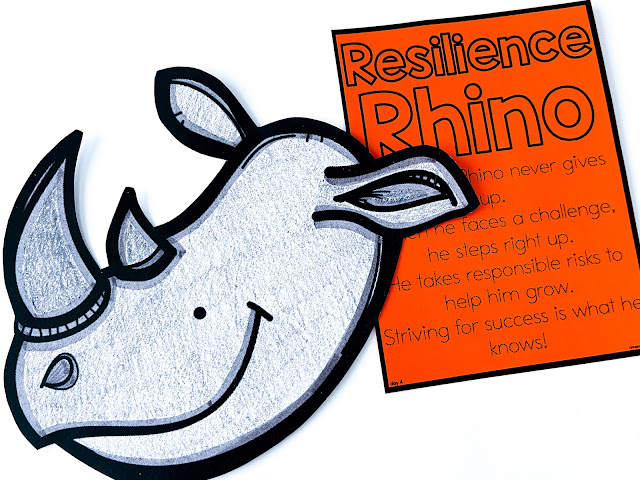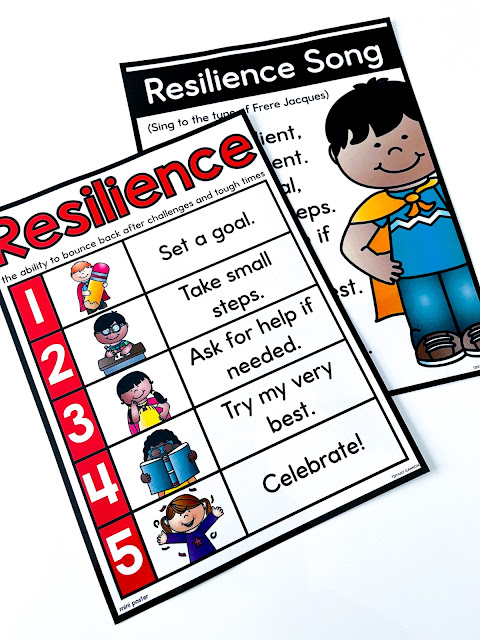Welcome to our last post in the Social Emotional Learning January reset series. This week, we are discussing the importance of resilience in your classroom. Often times, students tend to give up when faced with challenges in the classroom, therefore we need to equip them with the strategies to face and overcome those obstacles. Obstacles are a critical part of success. They allow us to develop determination and the ability to persevere through difficult circumstances. This takes lots of practice, so let's look at some different ways to approach teaching this to students.
The Five Step Strategy
When students face a problem or a difficult task, it can become very overwhelming for them. They need specific steps that they can follow to tackle those challenges. The more practice they get, the better they will become. It's also important to address that your attitude can affect how you solve that problem. You can control your attitude by staying positive and being brave when taking steps to overcome a challenge.
These five steps will give students a formula to follow when faced with an obstacle. First, set a goal. The goal should be specific and achievable. Next, take small steps. Focus on one chunk at a time, and take one step at a time to complete the task. They will also need to be ready to tolerate some discomfort. The task or problem is probably something they've never taken on before, so they should be okay with a little discomfort. Third of all, ask for help if needed. Don't just quit and not try. There are people there who are always willing to help. Then, try your very best. You might fail but at least you gave it your all. Finally, celebrate! Even if you made mistakes or failed, celebrate that you tried your best and finished.
Honor Mistakes in Your Classroom
We are going to make mistakes; we are human. We aren't perfect and can't do everything. You as the teacher should model making mistakes and learning from those mistakes. Establish a culture that honors failures and disappointment. This will help students feel comfortable making mistakes, which will then help them build the resilience to bounce back and try again.
After the Fall is a great mentor text to use when teaching students about developing resilience. You can look at his mistakes and how he takes steps to overcome them. He shows bravery, determination, and resilience throughout the story.
Identify Your Emotions
When facing an obstacle, we tend to get frustrated, worried, or maybe even upset. This can inhibit us from taking the next steps to overcome it. We need students to be able to stop and identify their emotions at those times, so that they can respond to their emotions. They can then use self-management strategies to change their mindset. If you are feeling angry, try to think of something positive. Think of another time you faced something difficult and were brave enough to face it.
You can play this game with students called, Name That Emotion! Gameshow! The class is divided into two teams. They can earn points by identifying the character's emotion and describing a way to respond to that emotion when facing a problem. This gives everyone different examples and ideas of what to do when those feelings creep in. It's a fun PowerPoint game that's included in the resource!
Take On Challenges
One way we can become more resilient is to take on challenges. Be brave and have a positive attitude when taking on responsible risks. Make sure that your classroom is a safe space that encourages this type of behavior. When students see others being brave, it can be infectious!
You can introduce them to the SEL character, Resilience Rhino. This poem reminds them of the outcome of taking on challenges and being resilient in the face of adversity.











No comments
Post a Comment
Note: Only a member of this blog may post a comment.